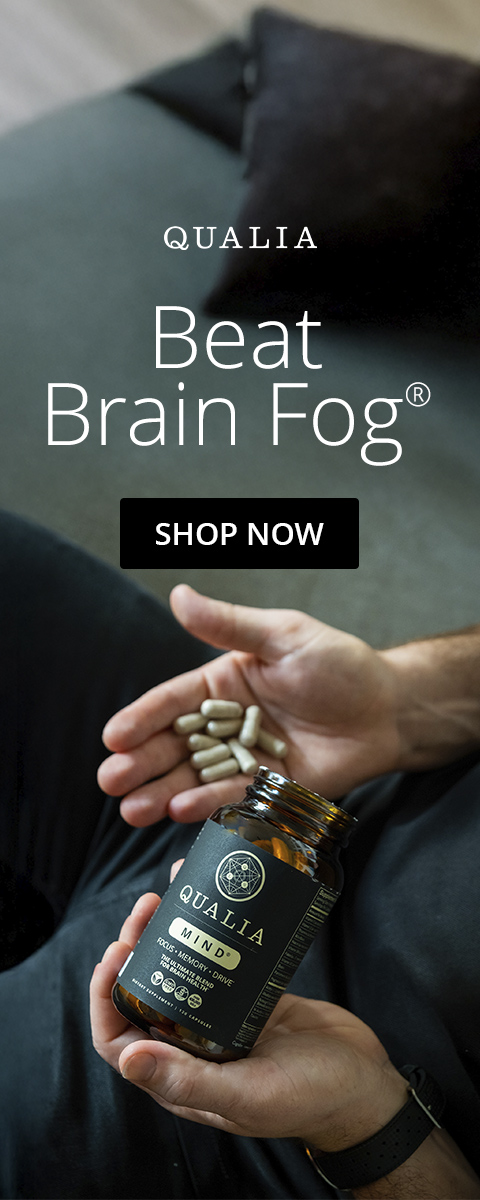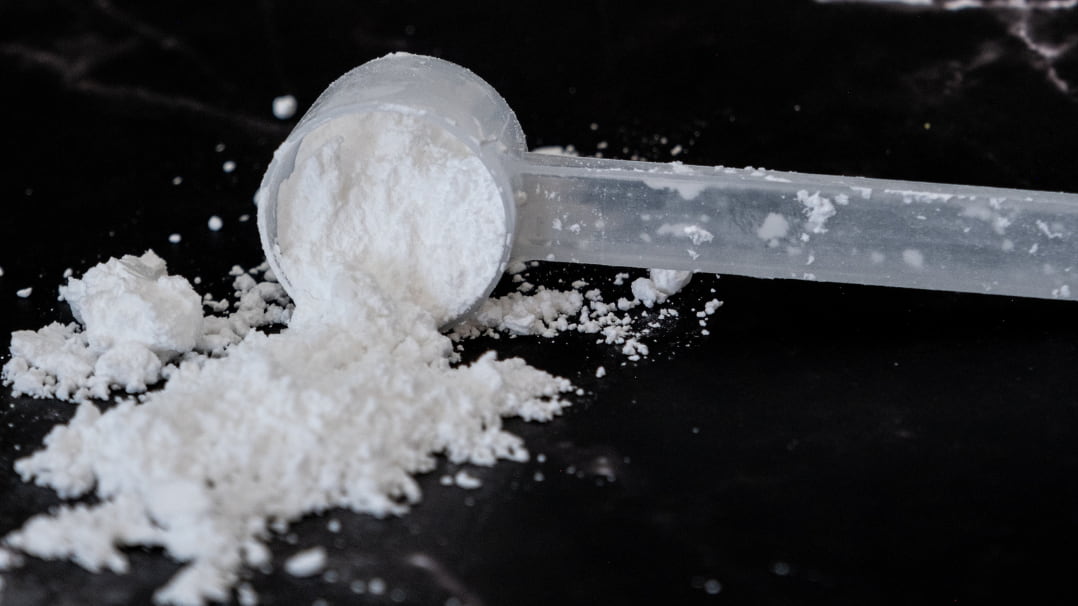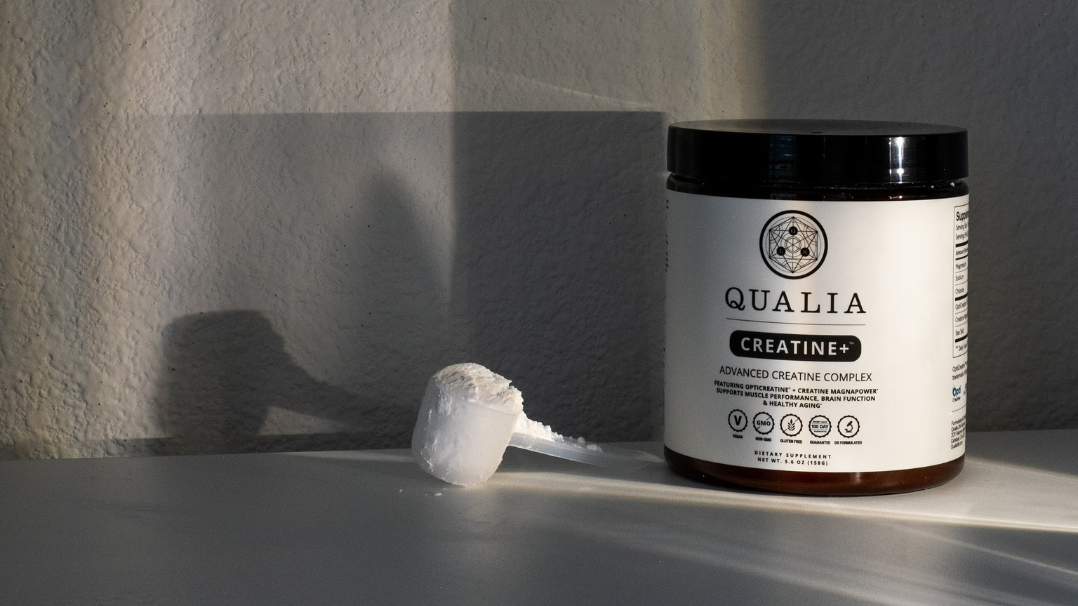L-carnitine is a cellular compound essential for human health. L-carnitine is a key nutrient in cellular metabolism whose main function is to transport fatty acids into mitochondria to be metabolized and used for cell energy production [1]. This activity of L-carnitine is essential for tissues to be able to burn fat. L-carnitine also has antioxidant properties that contribute to the maintenance of cell and tissue health [2].
L-carnitine is produced in the body but can also be obtained from the diet, primarily from foods of animal origin. It is also a popular dietary supplement due to its many health benefits.*
In this article, we’ll learn about L-carnitine and some of its main benefits.
What is L-Carnitine?
L-carnitine (β-hydroxy-γ-trimethylaminobutyrate) is made in the body by the liver, the kidneys, and the brain from the essential amino acids L-lysine and L-methionine. The name carnitine is derived from the Latin word “carnus” meaning flesh or meat because it was originally identified in muscle extracts.
L-carnitine is found in cells and tissues either as free L-carnitine or as acylcarnitines, i.e., L-carnitine bound to an acyl group. Acylcarnitines include acetyl-l-carnitine (ALCAR) and conjugates of carnitine and fatty acids.
L-carnitine’s most important role in cells is to transport fatty acids (as acylcarnitines) across the mitochondrial membranes for breakdown in the mitochondrial pathway of fat metabolism called fatty acid oxidation or beta-oxidation. Because of this activity, L-carnitine is concentrated in tissues that preferably use fatty acids as a fuel, namely the heart and skeletal muscle, where about 95% of total body L-carnitine is stored. A small amount is also stored in the liver and kidney, and only about 0.5% of the body’s L-carnitine is found in circulation in the blood [1,3].
L-carnitine also has antioxidant properties due to its capacity to scavenge reactive oxygen species (ROS) and chelate transition metal ions that can promote the generation of free radicals [2].
How L-Carnitine Benefits Support Overall Health
As a key molecule in fat metabolism, L-carnitine has an important role in tissues and organs with high energetic demand that use fatty acids as an energy source, such as skeletal muscles and the heart. Therefore, L-carnitine supplements are widely used to support exercise recovery, cardiovascular health, healthy metabolism, and healthy weight maintenance. In addition, L-carnitine benefits other aspects of health, particularly joint health and healthy brain function and cognition.*
Supports Energy Production
Without L-carnitine, cellular energy balance would be compromised because fatty acid oxidation would be limited. To be metabolized, fatty acids have to reach the inner compartment (i.e., the matrix) of mitochondria, which is where beta-oxidation takes place. This means they have to cross the mitochondrial membranes. Short- and medium-chain fatty acids (i.e., those with a chain of up to 8 carbon molecules) do so easily, but long and very long-chain fatty acids need a transport mechanism to get through [1,4].
This mechanism is called the carnitine shuttle, in which fatty acids cross the mitochondrial membranes bound to L-carnitine, forming acylcarnitine molecules that can cross the mitochondrial membrane through a transporter in exchange for free L-carnitine. Once on the matrix side of the membrane, the fatty acid is transferred to coenzyme A (CoA) and is then oxidized for energy production; free L-carnitine is transported back out to grab another fatty acid [1,4].
Supports Exercise Recovery
Fatty acids are the main fuel for skeletal muscle. At rest, fatty acids account for 50% of muscles’ energy consumption (along with 28% from carbohydrates and 22% from amino acids). Under moderate exercise conditions, energy consumption from fatty acids increases to up to 85%. At high intensity, muscles increase their glucose use because it’s a faster energy source [5].
Research in humans has shown that L-carnitine supplementation may support muscle L-carnitine content and promote muscle fuel metabolism during exercise. Metabolic changes included a reduction of the usage of muscle glycogen (i.e., its carbohydrate stores) during low-intensity exercise (consistent with an increase in lipid utilization) and streamlined glucose metabolism and mitochondrial flux during high-intensity exercise, leading to reduced anaerobic ATP production (which is what leads to lactic acid build-up in muscles). These changes were associated with a support of exercise performance [6].*
Although L-carnitine has been reported to enhance exercise capacity and endurance in a few studies, overall, research on its ability to support exercise performance has yielded conflicting results. A meta-analysis found that L-carnitine did not support moderate exercise performance, but could potentially support high-intensity exercise performance [7].*
Where L-carnitine seems to be the most beneficial is in supporting exercise recovery [8]. L-carnitine supplementation has been shown to help attenuate exercise-induced muscle damage and to support resistance to muscle soreness and stiffness, which often occurs in the days after intense exercise. This effect may result from the promotion of healthy blood flow and oxygen supply to muscles along with the support of cellular metabolism [9].*
Exercise is associated with an increased production of ROS that can promote tissue changes that support muscle adaptation to exercise, but that can also contribute to muscle damage and soreness [10–12]. L-carnitine may also support exercise recovery by helping to mitigate exercise-induced oxidative stress due to its antioxidant activity [13,14].*
Supports Cardiovascular Health
L-carnitine has been shown to support healthy cardiovascular function [15]. Similarly to skeletal muscle, cardiac muscle cells rely primarily on fatty acids for energy generation. In a healthy heart, between 70% to 90% of cardiac ATP is produced by fatty acid oxidation [16,17]. This means that for cardiac activity to happen, cardiac cells need L-carnitine, making it essential for heart function and health. Due to its antioxidant effects, L-carnitine also supports healthy endothelial function and contributes to vascular health and healthy blood flow [18].*
Supports Healthy Metabolism and Weight Management
L-carnitine is essential for cells to burn fat, both at rest and during exercise—without it, fatty acids can’t get into mitochondria to get oxidized and turned into cellular energy. Healthy fatty acid oxidation contributes to mitochondrial health and is essential for maintaining energy homeostasis in the human body [19].
As a consequence of its role in fat oxidation, L-carnitine is important not only to cellular metabolism but also to the overall metabolic health of our body. One of the aspects that L-carnitine supports is a healthy body composition: L-carnitine has been shown to support the maintenance of healthy weight and healthy fat levels in the body [20–22].*
Supports Joint Health
L-carnitine has been shown to support several aspects of joint health, particularly the maintenance of healthy joint structure and function, cartilage integrity, and synovial fluid composition [23–27]. L-carnitine also supported joint comfort and functionality in human clinical studies [23,28–30].*
L-carnitine may do so partially by helping to maintain a healthy weight, resulting in less burden on joints. It can also contribute to healthier levels of chemical mediators that are known to impact joint health, contribute to loss of structural integrity of joint cartilage, and promote joint discomfort [30].*
Supports Brain Function
The brain’s preferred fuel is glucose. Neurons, specifically, rely primarily on glucose, although they can also use alternative fuels in specific situations (e.g., ketone bodies under prolonged fasting or keto diets [31]). But neurons are not the only type of cells in the brain. A type of glial cells called astrocytes seem to also use fatty acids for energy production [32,33].
Astrocytes make up the majority of cells in the human central nervous system (CNS) and are absolutely essential for healthy brain function as they support metabolic, functional, structural, homeostatic, and neuroprotective functions [34,35]. In preclinical studies, it has been estimated that about 20% of the total energy needs of the adult brain may be met by fatty acid oxidation occurring in astrocytes [33]. L-carnitine again plays a part in this.*
L-carnitine from the diet is able to cross the blood-brain barrier (BBB) through transporters and reach the brain. The acetylated form of L-carnitine, acetyl-L-carnitine (ALCAR) can also do so [36]. In fact, ALCAR is usually the preferred form in supplements for brain and nervous system support because it enters the brain quickly and is metabolized in mitochondria to L-carnitine, while its acetyl group is transferred to CoA to form acetyl-CoA. Therefore, in addition to L-carnitine for mitochondrial fatty acid transport, ALCAR provides acetyl-CoA that can be used for brain lipid synthesis, be oxidized in the citric acid cycle for energy production, or be incorporated into neurotransmitters such as acetylcholine [36–39].*
ALCAR has shown several benefits for brain health: it supported brain energy metabolism, brain mitochondrial function, neuronal membrane lipid/phospholipid metabolism, synaptic plasticity, and neuroprotective functions [40–56]. In clinical studies, it supported cognitive function [57–60].*
Common Uses of L-Carnitine
L-carnitine’s role in fatty acid metabolism and cell energy production makes it a versatile compound that can contribute to several aspects of health and promote the healthy function of multiple tissues in the human body. L-carnitine is particularly beneficial for tissues that use fatty acids as fuel, such as skeletal and cardiac muscle. It can be used to support muscle function and exercise recovery, making it a great option for athletes and physically active individuals in general.*
Another aspect of physical health L-carnitine supports is joint health. This adds to the benefits physically active individuals may get from L-carnitine, as exercise puts a lot of strain on our joints. But joint support is beneficial to everyone, particularly as we age and joints tend to show signs of wear and tear that can cause discomfort.*
And it’s not just physical health: L-carnitine may also support healthy brain function and promote cognitive performance.*
Food Sources of L-Carnitine
The body needs about 15 mg of L-carnitine per day. In healthy individuals, L-carnitine can be produced in the body in sufficient amounts, but daily needs are usually met from the combination of endogenous synthesis and dietary intake [61,62]. Adults eating animal products get about 75% of the daily carnitine requirements from the diet [63–65].
L-carnitine is found abundantly in animal foods. Here are some of the best animal sources of L-carnitine [66]:
Beef steak: 66 mg per 3.5 oz / 100 g
Pork steak: 22 mg per 3.5 oz / 100 g
Turkey fillet: 13 mg per 3.5 oz / 100 g
Chicken fillet: 8 mg per 3.5 oz / 100 g
Cow’s milk 1.5% fat: 35 mg per 3.5 oz / 100 g
Yogurt 0.3% fat: 39 mg per 3.5 oz / 100 g
Plant-derived foods, on the other hand, contain only very small amounts of L-carnitine. Vegetarians and vegans get very little L-carnitine from their diet (about 10–12%), meaning they may need to make as much as 90% of their daily needs [65,67]. They seem to do so effectively, as only modest carnitine deficits have been reported for vegetarians relative to the general population [68,69].
Studies have shown that although plasma carnitine concentrations are lower in vegetarians and vegans in comparison to omnivores, they do not have lower muscle stores of carnitine [70]. It is possible that the decreased dietary intake may activate regulatory mechanisms that increase synthesis and/or absorption and decrease excretion of L-carnitine [65,70,71].
Despite being present in low amounts, L-carnitine can still be found in several vegetables, fruits, and mushrooms. The best plant and mushroom sources of L-carnitine include [66]:
Oyster mushroom: 5 mg per 3.5 oz / 100 g
Chanterelle mushroom: 1.32 mg per 3.5 oz / 100 g
Avocado: 0.43 mg per 3.5 oz / 100 g
Carrot: 0.40 mg per 3.5 oz / 100 g
Cauliflower: 0.36 mg per 3.5 oz / 100 g
The Role of L-Carnitine Supplements
Although the body is usually able to produce L-carnitine in sufficient amounts to meet needs, even in vegetarians and vegans, supplementing L-carnitine is a good option to ensure that the body is well stocked. Maintaining healthy L-carnitine levels is essential for skeletal and cardiac muscle function and, importantly, for maintaining mitochondrial health, which is important for healthy aging [72–74].*
In preclinical studies, it has been shown that L-carnitine insufficiency is associated with aging and compromised mitochondrial function and metabolic health [75].* L-carnitine and ALCAR supplementation may help to maintain healthy L-carnitine levels in tissues, support mitochondrial performance, and promote healthy aging [76,77]. These actions are likely to underlie many of the benefits L-carnitine and ALCAR have shown in preclinical and clinical studies.*
L-Carnitine In Qualia Products
We have included L-carnitine in a few of our products. In Qualia Mind®, we included it as acetyl-L-carnitine (ALCAR), the form that has been shown to support healthy brain function and cognition.* In Qualia Mitochondria+, we included it as L-carnitine to support healthy mitochondrial function and fatty acid metabolism.* L-carnitine will also be part of a new product coming soon: Qualia Joint Health!
*These statements have not been evaluated by the Food and Drug Administration. This product is not intended to diagnose, treat, cure, or prevent any disease.
References
[1]J.M. Berg, J.L. Tymoczko, G.J. Gatto, L. Stryer, eds., Biochemistry, 8th ed, W.H. Freeman and Company, 2015.
[2]I. Gülçin, Life Sci. 78 (2006) 803–811.
[3]A. Gnoni, S. Longo, G.V. Gnoni, A.M. Giudetti, Molecules 25 (2020) 182.
[4]D.L. Nelson, M.M. Cox, Lehninger Principles of Biochemistry, 7th Edition, W. H. Freeman and Company, 2017.
[5]K. Melzer, E Spen Eur. E J. Clin. Nutr. Metab. 6 (2011) e45–e52.
[6]B.T. Wall, F.B. Stephens, D. Constantin-Teodosiu, K. Marimuthu, I.A. Macdonald, P.L. Greenhaff, J. Physiol. 589 (2011) 963–973.
[7]J. Mielgo-Ayuso, L. Pietrantonio, A. Viribay, J. Calleja-González, J. González-Bernal, D. Fernández-Lázaro, Nutrients 13 (2021) 4359.
[8]R. Fielding, L. Riede, J.P. Lugo, A. Bellamine, Nutrients 10 (2018).
[9]H. Yarizadh, S. Shab-Bidar, B. Zamani, A.N. Vanani, H. Baharlooi, K. Djafarian, J. Am. Coll. Nutr. 39 (2020) 457–468.
[10]S.K. Powers, M.J. Jackson, Physiol. Rev. 88 (2008) 1243–1276.
[11]S.K. Powers, R. Deminice, M. Ozdemir, T. Yoshihara, M.P. Bomkamp, H. Hyatt, J. Sport Health Sci. 9 (2020) 415–425.
[12]F. Wang, X. Wang, Y. Liu, Z. Zhang, Oxid. Med. Cell. Longev. 2021 (2021) 3846122.
[13]K. Parandak, H. Arazi, F. Khoshkhahesh, B. Nakhostin-Roohi, Asian J. Sports Med. 5 (2014) 123–128.
[14]J.-Y. Ho, W.J. Kraemer, J.S. Volek, M.S. Fragala, G.A. Thomas, C. Dunn-Lewis, M. Coday, K. Häkkinen, C.M. Maresh, Metabolism 59 (2010) 1190–1199.
[15]J.J. DiNicolantonio, C.J. Lavie, H. Fares, A.R. Menezes, J.H. O’Keefe, Mayo Clin. Proc. 88 (2013) 544–551.
[16]T. Doenst, T.D. Nguyen, E.D. Abel, Circ. Res. 113 (2013) 709–724.
[17]I.F. Kodde, J. van der Stok, R.T. Smolenski, J.W. de Jong, Comp. Biochem. Physiol. A Mol. Integr. Physiol. 146 (2007) 26–39.
[18]J.S. Volek, D.A. Judelson, R. Silvestre, L.M. Yamamoto, B.A. Spiering, D.L. Hatfield, J.L. Vingren, E.E. Quann, J.M. Anderson, C.M. Maresh, W.J. Kraemer, Am. J. Cardiol. 102 (2008) 1413–1417.
[19]S.M. Houten, S. Violante, F.V. Ventura, R.J.A. Wanders, Annu. Rev. Physiol. 78 (2016) 23–44.
[20]N. Talenezhad, M. Mohammadi, N. Ramezani-Jolfaie, H. Mozaffari-Khosravi, A. Salehi-Abargouei, Clin. Nutr. ESPEN 37 (2020) 9–23.
[21]M. Pooyandjoo, M. Nouhi, S. Shab-Bidar, K. Djafarian, A. Olyaeemanesh, Obes. Rev. 17 (2016) 970–976.
[22]M. Askarpour, A. Hadi, M. Miraghajani, M.E. Symonds, A. Sheikhi, E. Ghaedi, Pharmacol. Res. 151 (2020) 104554.
[23]A. Malek Mahdavi, R. Mahdavi, S. Kolahi, M. Zemestani, A.-M. Vatankhah, Nutr. Res. 35 (2015) 707–715.
[24]S.A. Khodir, M.A. Al-Gholam, H.R. Salem, Iran. J. Basic Med. Sci. 23 (2020) 1035–1044.
[25]D. Stoppoloni, L. Politi, P. Dalla Vedova, M. Messano, A. Koverech, R. Scandurra, A. Scotto d’Abusco, Rheumatol. Int. 33 (2013) 2399–2403.
[26]E. Bianchi, L. Di Cesare Mannelli, C. Menicacci, P. Lorenzoni, M. Aglianò, C. Ghelardini, Life Sci. 106 (2014) 32–39.
[27]M.U. Ok, R. Şahin, M.S. Balik, O. Okçu, Injury 54 (2023) 111115.
[28]S. Kolahi, A. Malek Mahdavi, R. Mahdavi, S. Lak, Eur. J. Integr. Med. 7 (2015) 540–546.
[29]A. Malek Mahdavi, R. Mahdavi, S. Kolahi, J. Am. Coll. Nutr. 35 (2016) 597–603.
[30]H. Kou, B. Li, Z. Wang, J. Ma, Mol. Nutr. Food Res. 68 (2024) e2300614.
[31]D. García-Rodríguez, A. Giménez-Cassina, Front. Mol. Neurosci. 14 (2021) 732120.
[32]A. Panov, Z. Orynbayeva, V. Vavilin, V. Lyakhovich, Biomed Res. Int. 2014 (2014) 472459.
[33]D. Ebert, R.G. Haller, M.E. Walton, J. Neurosci. 23 (2003) 5928–5935.
[34]B. Weber, L.F. Barros, Cold Spring Harb. Perspect. Biol. 7 (2015).
[35]J.A. Stogsdill, C. Eroglu, Curr. Opin. Neurobiol. 42 (2017) 1–8.
[36]K.A. Nałecz, D. Miecz, V. Berezowski, R. Cecchelli, Mol. Aspects Med. 25 (2004) 551–567.
[37]H. Kuratsune, Y. Watanabe, K. Yamaguti, G. Jacobsson, M. Takahashi, T. Machii, H. Onoe, K. Onoe, K. Matsumura, S. Valind, T. Kitani, B. Långström, Biochem. Biophys. Res. Commun. 231 (1997) 488–493.
[38]L.L. Jones, D.A. McDonald, P.R. Borum, Prog. Lipid Res. 49 (2010) 61–75.
[39]T. Aureli, C. Puccetti, M.E. Di Cocco, A. Arduini, R. Ricciolini, M. Scalibastri, C. Manetti, F. Conti, Eur. J. Biochem. 263 (1999) 287–293.
[40]O.B. Smeland, T.W. Meisingset, K. Borges, U. Sonnewald, Neurochem. Int. 61 (2012) 100–107.
[41]T. Aureli, A. Miccheli, R. Ricciolini, M.E. Di Cocco, M.T. Ramacci, L. Angelucci, O. Ghirardi, F. Conti, Brain Res. 526 (1990) 108–112.
[42]T. Aureli, M.E. Di Cocco, C. Puccetti, R. Ricciolini, M. Scalibastri, A. Miccheli, C. Manetti, F. Conti, Brain Res. 796 (1998) 75–81.
[43]C. Ori, U. Freo, G. Pizzolato, M. Dam, Brain Res. 951 (2002) 330–335.
[44]U. Freo, M. Dam, C. Ori, Brain Res. 1259 (2009) 32–39.
[45]R.F. Villa, F. Ferrari, A. Gorini, Neurochem. Res. 36 (2011) 1372–1382.
[46]T. Aureli, A. Miccheli, M.E. Di Cocco, O. Ghirardi, A. Giuliani, M.T. Ramacci, F. Conti, Brain Res. 643 (1994) 92–99.
[47]R.E. Rosenthal, R. Williams, Y.E. Bogaert, P.R. Getson, G. Fiskum, Stroke 23 (1992) 1312–7; discussion 1317–8.
[48]T. Aureli, M.E. Di Cocco, G. Capuani, R. Ricciolini, C. Manetti, A. Miccheli, F. Conti, Neurochem. Res. 25 (2000) 395–399.
[49]R. Laschi, L. Badiali de Giorgi, F. Bonvicini, L. Centurione, Int. J. Clin. Pharmacol. Res. 10 (1990) 59–63.
[50]K. Kocsis, R. Frank, J. Szabó, L. Knapp, Z. Kis, T. Farkas, L. Vécsei, J. Toldi, Neuroscience 332 (2016) 203–211.
[51]S. Singh, A. Mishra, N. Srivastava, R. Shukla, S. Shukla, Mol. Neurobiol. 55 (2018) 583–602.
[52]S.A. Zanelli, N.J. Solenski, R.E. Rosenthal, G. Fiskum, Ann. N. Y. Acad. Sci. 1053 (2008) 153–161.
[53]S. Afshin-Majd, K. Bashiri, Z. Kiasalari, T. Baluchnejadmojarad, R. Sedaghat, M. Roghani, Biomed. Pharmacother. 89 (2017) 1–9.
[54]H. Keshavarz-Bahaghighat, M.R. Sepand, M.H. Ghahremani, M. Aghsami, N. Sanadgol, A. Omidi, V. Bodaghi-Namileh, O. Sabzevari, Biol. Trace Elem. Res. 184 (2018) 422–435.
[55]L. Nicassio, F. Fracasso, G. Sirago, C. Musicco, A. Picca, E. Marzetti, R. Calvani, P. Cantatore, M.N. Gadaleta, V. Pesce, Exp. Gerontol. 98 (2017) 99–109.
[56]G. Forloni, N. Angeretti, S. Smiroldo, J. Neurosci. Res. 37 (1994) 92–96.
[57]J.O. Brooks 3rd, J.A. Yesavage, A. Carta, D. Bravi, Int. Psychogeriatr. 10 (1998) 193–203.
[58]M. Malaguarnera, M. Vacante, M. Motta, M. Giordano, G. Malaguarnera, R. Bella, G. Nunnari, L. Rampello, G. Pennisi, Metab. Brain Dis. 26 (2011) 281–289.
[59]S.A. Montgomery, L.J. Thal, R. Amrein, Int. Clin. Psychopharmacol. 18 (2003) 61–71.
[60]M. Malaguarnera, M.P. Gargante, E. Cristaldi, V. Colonna, M. Messano, A. Koverech, S. Neri, M. Vacante, L. Cammalleri, M. Motta, Arch. Gerontol. Geriatr. 46 (2008) 181–190.
[61]J. Pekala, B. Patkowska-Sokoła, R. Bodkowski, D. Jamroz, P. Nowakowski, S. Lochyński, T. Librowski, Curr. Drug Metab. 12 (2011) 667–678.
[62](n.d.).
[63]F.M. Vaz, R.J.A. Wanders, Biochem. J. 361 (2002) 417–429.
[64]N. Longo, M. Frigeni, M. Pasquali, Biochim. Biophys. Acta 1863 (2016) 2422–2435.
[65]C.J. Rebouche, FASEB J. 6 (1992) 3379–3386.
[66]K. Seline, H. Johein, Food Chem. 105 (2007) 793–804.
[67]C.J. Rebouche, Ann. N. Y. Acad. Sci. 1033 (2004) 30–41.
[68]J.L. Flanagan, P.A. Simmons, J. Vehige, M.D. Willcox, Q. Garrett, Nutr. Metab. (Lond.) 7 (2010) 30.
[69]K.A. Lombard, A.L. Olson, S.E. Nelson, C.J. Rebouche, Am. J. Clin. Nutr. 50 (1989) 301–306.
[70]K. Novakova, O. Kummer, J. Bouitbir, S.D. Stoffel, U. Hoerler-Koerner, M. Bodmer, P. Roberts, A. Urwyler, R. Ehrsam, S. Krähenbühl, Eur. J. Nutr. 55 (2016) 207–217.
[71]C.J. Rebouche, C.A. Chenard, J. Nutr. 121 (1991) 539–546.
[72]C. López-Otín, M.A. Blasco, L. Partridge, M. Serrano, G. Kroemer, Cell 186 (2023) 243–278.
[73]N. Sun, R.J. Youle, T. Finkel, Mol. Cell 61 (2016) 654–666.
[74]J.A. Amorim, G. Coppotelli, A.P. Rolo, C.M. Palmeira, J.M. Ross, D.A. Sinclair, Nat. Rev. Endocrinol. 18 (2022) 243–258.
[75]R.C. Noland, T.R. Koves, S.E. Seiler, H. Lum, R.M. Lust, O. Ilkayeva, R.D. Stevens, F.G. Hegardt, D.M. Muoio, J. Biol. Chem. 284 (2009) 22840–22852.
[76]B.N. Ames, J. Liu, Ann. N. Y. Acad. Sci. 1033 (2004) 108–116.
[77]M.A. Virmani, M. Cirulli, Int. J. Mol. Sci. 23 (2022) 2717.








No Comments Yet
Sign in or Register to Comment